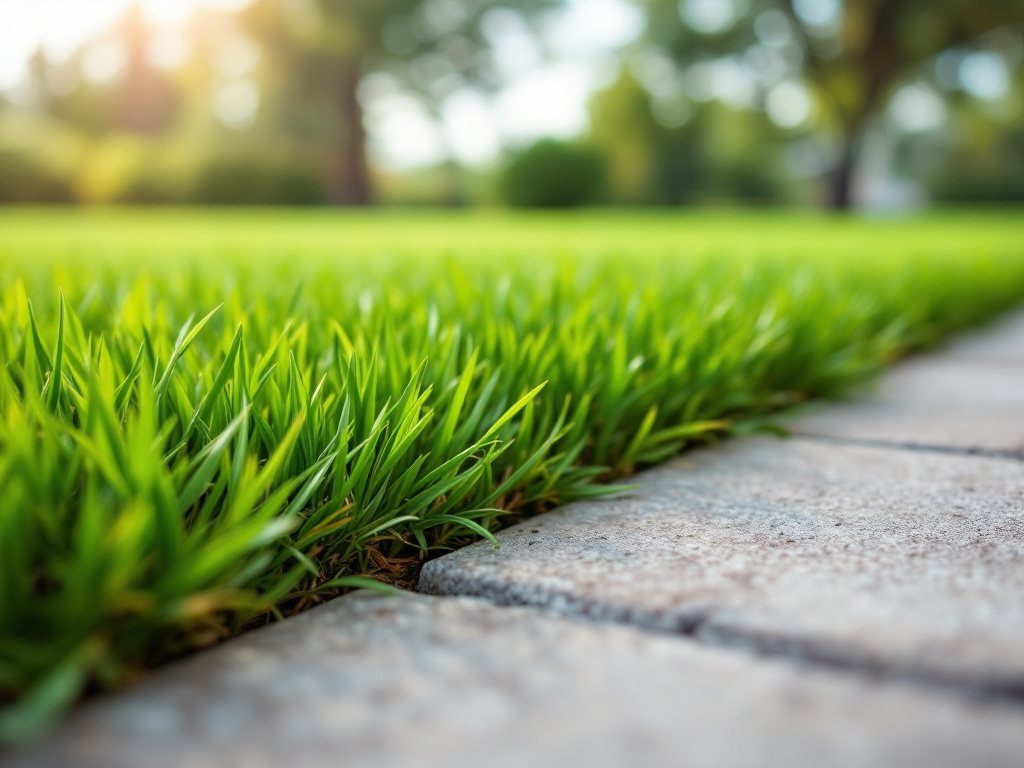Image generated by flux-ai.io & content generated by ChatGPT Version 4o-mini
Transforming Polk County Lawns: The Benefits of Zoysiagrass
As residents of Polk County, we take pride in our homes and the appearance of our lawns. Maintaining a beautiful yard can be a challenge, especially given Florida’s unique climate. Recent research highlights zoysiagrass as a strong contender for local lawns, bringing a range of benefits that could make your yard the envy of the neighborhood.
What is Zoysiagrass?
Zoysiagrass (Zoysia spp.) is a type of grass that originated in Asia and has been gaining popularity in the United States, especially in warmer climates like ours. Several new varieties have emerged that are more resilient, quicker to establish, and better at resisting pests compared to older grass types. This is good news for homeowners in Polk County, where our sandy soils and hot summers can make lawn care tricky.
Why Choose Zoysiagrass?
-
Drought Resistance: One of the standout features of zoysiagrass is its ability to withstand dry conditions. This is particularly relevant for Polk County, where droughts can occur, especially in the summer months. Zoysiagrass can go dormant and turn brown during dry spells, but it quickly greens up once the rains return. This means less water usage and a more sustainable lawn, aligning with Florida-Friendly Landscaping principles.
-
Pest Resistance: Many zoysiagrass varieties have improved resistance to pests that typically plague other grasses. For instance, hunting billbugs and mole crickets can wreak havoc on lawns, but zoysiagrass is tougher against these threats. This could save you time and money on pest control treatments, promoting responsible management of pest control products.
-
Dense Growth: Zoysiagrass grows thick and lush, which helps prevent weeds from taking hold. In a community where many enjoy outdoor activities, a robust lawn can withstand foot traffic from kids playing or gatherings with friends and family, contributing to a healthy urban landscape.
Choosing the Right Variety
Not all zoysiagrass is created equal. Some popular varieties include:
-
Empire: Known for its dense growth and adaptability, Empire is a favorite among homeowners in Florida. It does well in both sandy and clay soils and has good shade tolerance, making it suitable for lawns with varying sun exposure.
-
El Toro: This variety is recognized for its fast establishment and improved resistance to diseases. If you’re looking to quickly transform your yard, El Toro might be the right choice.
-
CitraZoy: A newer hybrid, CitraZoy offers excellent shade tolerance and drought resistance, making it ideal for those shadier spots in your yard or for homeowners who want a low-maintenance lawn.
Caring for Zoysiagrass
While zoysiagrass has many advantages, it does require some specific care. Regular mowing, proper fertilization, and occasional irrigation are crucial. It’s important to follow local guidelines for fertilization to protect our precious water resources. A soil test can help ensure you’re giving your lawn the nutrients it needs without over-fertilizing, adhering to the “4R’s” of nutrient management: right time, right source, right rate, and right place.
Local Impact
Adopting zoysiagrass in Polk County could have benefits beyond just your lawn. As we embrace more sustainable gardening practices, we can help reduce water usage and lessen the impact on our local ecosystems. A well-maintained lawn contributes to the overall beauty of our community, making Polk County an even more inviting place to live.
Conclusion
For Polk County residents looking to enhance their lawns while being mindful of Florida’s environment, zoysiagrass offers a compelling solution. With its drought resistance, pest tolerance, and dense growth, it’s an excellent option for maintaining beautiful and sustainable yards. As we continue to care for our homes and landscapes, exploring options like zoysiagrass could lead to greener pastures, both literally and figuratively.
References
ENH11/LH011: Zoysiagrass for Florida Lawns. (n.d.). Ask IFAS – Powered by EDIS. https://edis.ifas.ufl.edu/publication/LH011

